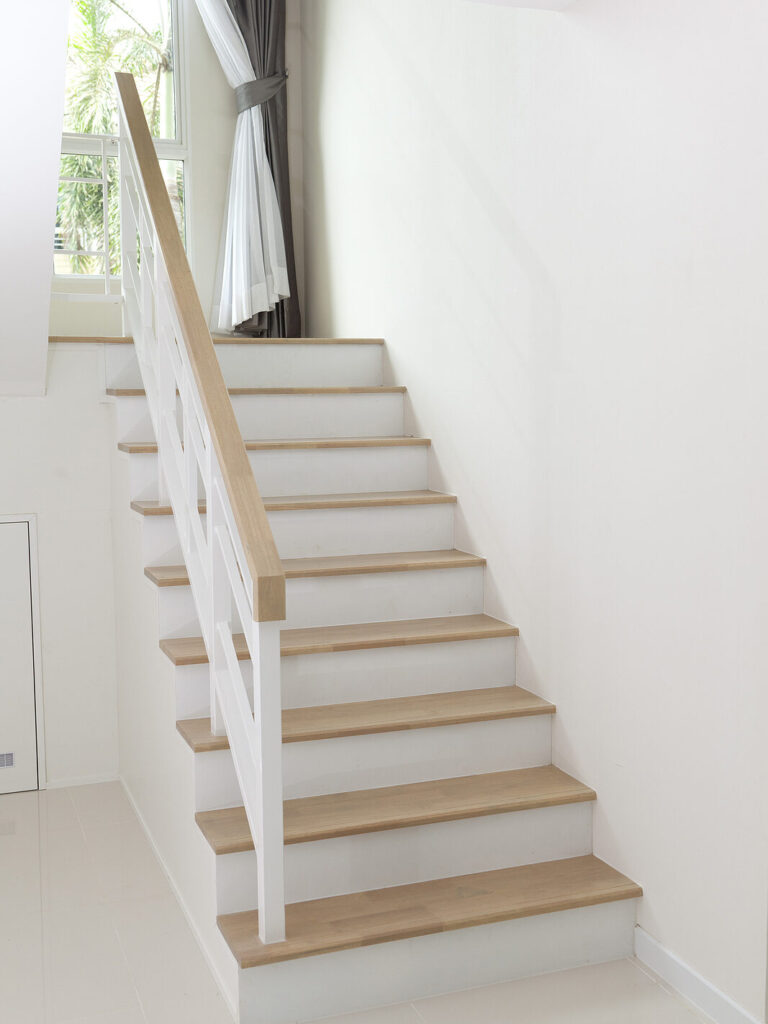What is Wood Stair Nosing & What Are its Uses?

Wood stair nosing is an important part of any staircase in commercial properties but can also be used in residential areas. Wood stair nosings are typically fitted to wood or laminate flooring and can come in a range of different sizes and materials to suit your requirements.
Below, we’ll discuss wood stair nosing in more detail and answer some common questions before you decide to buy.
What is Stair Nosing?
Also known as wood stair nose trims, wood stair nosing is used to cap or finish stair treads (the steps of the staircase); they are placed on the edges of each stair or step. They can be applied to both solid wood and laminate staircase to provide stability, protect from damage and enhance the staircase’s appearance.
What Wood Effects Are There?
Wood nosing comes in a variety of different wood effects, from aged oaks, blacks, Belgravia oak and rustic styles. The type of wood you choose will typically depend on the design of your staircase and your personal preference. It’s important to choose a wood or a wood effect that complements the design of your staircase, as nosing are used for both protecting the edge of the stair treads as well as enhancing their appearance.

What Are the Benefits of Wood Stair Nosing?
As well as the aesthetic advantages wood stair nosing offers, they also play an important part in the safety of your staircase. Stair nosing helps protect and add stability to the edge of each stair tread, minimising the risk of tripping hazards. This, combined with the many different styles of stair nosing, allows you to create a seamless transition from stair to the nosing.
There are also other types of stair nosing, which include:
- Bullnose stair nosing
- Aluminium stair nosing
- Anti-slip stair nosing
- Single or double channel stair nosing
- Ramped Edge stair nosing
Preparing Wood Stair Nosing for Solid Wood Stairs

The way you prep and install stair nosing depends on both the nosing and stairs material.
Cleaning
For solid wood stairs, it’s essential that you clean the stairs beforehand, vacuuming and wiping down the stairs to ensure a smooth, clean surface. If your staircase is damaged (cracks, holes, rough edges etc) then apply wood filler to these areas, let it dry and then sand over.
Measuring the nosing
You will then need to measure the stairs to ensure your wood stair nosing fits. This means measuring each stair, especially the ones that curve or change in shape (like in curved or L-shaped staircases).
Prepping your stairs
You may need to cut your stair nosing if it doesn’t come in pre-cut lengths. If you are cutting them yourself, it’s important that you mark the measurements and double-check them before cutting. We’d advise cutting a little bigger so that there’s additional room to trim the nosing down to the right size.
We’d also advise dry-fitting the stair nosing before attempting to use adhesives or screws. This way, it will ensure the nosing lies flush and flat on the edge of the tread.
For a full breakdown on how to fit stair nosing to your solid wood or laminate flooring, take a look at our handy guide on how to install stair nosing.
Looking for Wood Stair Nosing?

If you’re interested in buying stair nosing to complete your staircase design and make it safer, we have a range of options to choose from. Take a look at our stair nosing stock.
FAQs
While it isn’t essential that stairs should have nosing, they do serve a few important benefits, especially in commercial properties. In high traffic areas, like office blocks, flats or other areas where the public will frequently use the stairs, stair nosing can help weather the heavy foot traffic that is seen in these places. The nosing helps keep your stairs looking great, protected and most importantly, help keep people safe as they traverse up and down.
No, it is not a legal requirement for you to install stair nosing onto your commercial staircase. However, many companies choose to do this anyway because it’s a relatively inexpensive measure that increases the safety of staircases and protects them from damage via constant foot traffic.
Stair nosing is fairly simple to install if you follow the right guide! Just ensure you select nosing that’s durable and matches the design or material of your staircase.
Installing nosing on laminate stairs follows a very similar process to wooden stairs. The only difference is the material you’re applying the wood nosing to. Our stair nose installation guide should help you professionally fit your nosing onto your laminate stairs.
Yes, stair nosing can be used on ceramic tiles.


